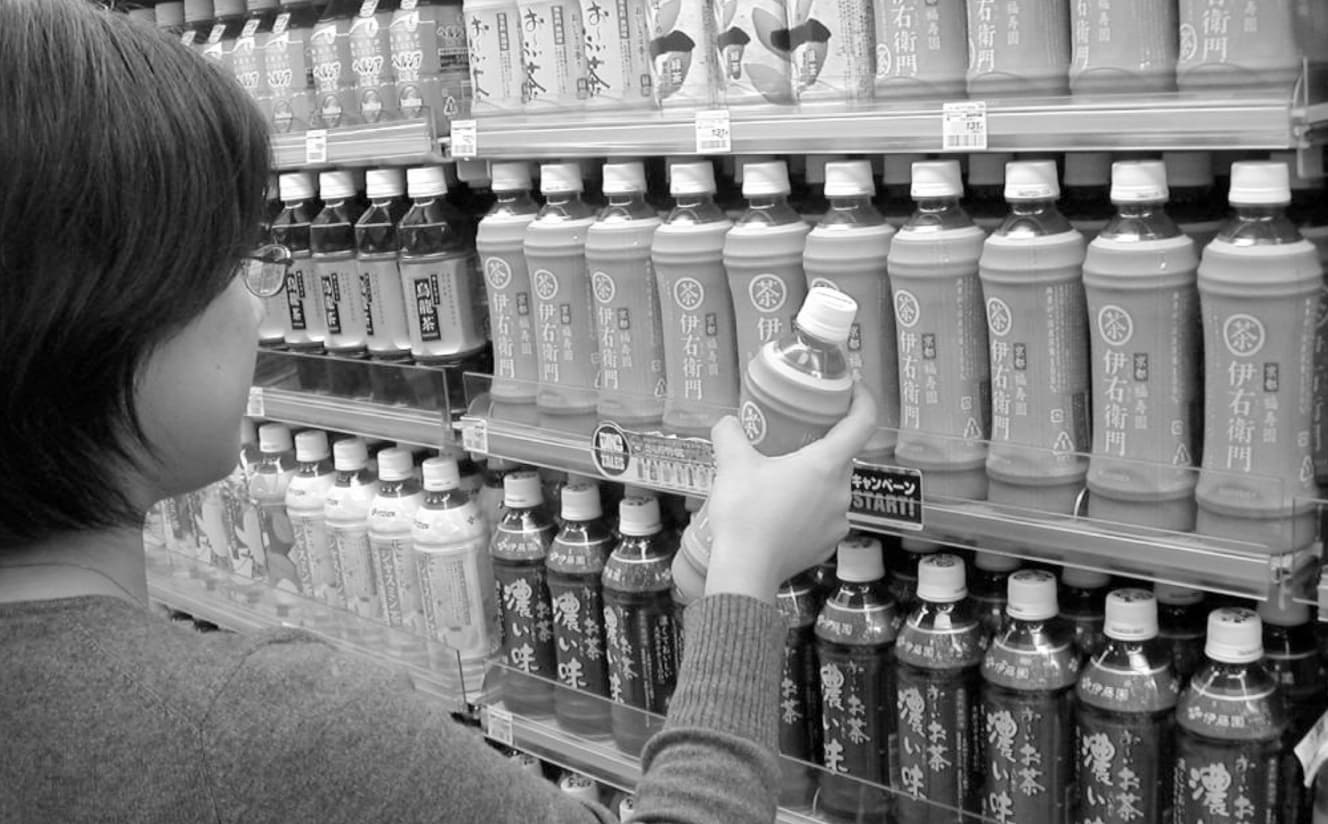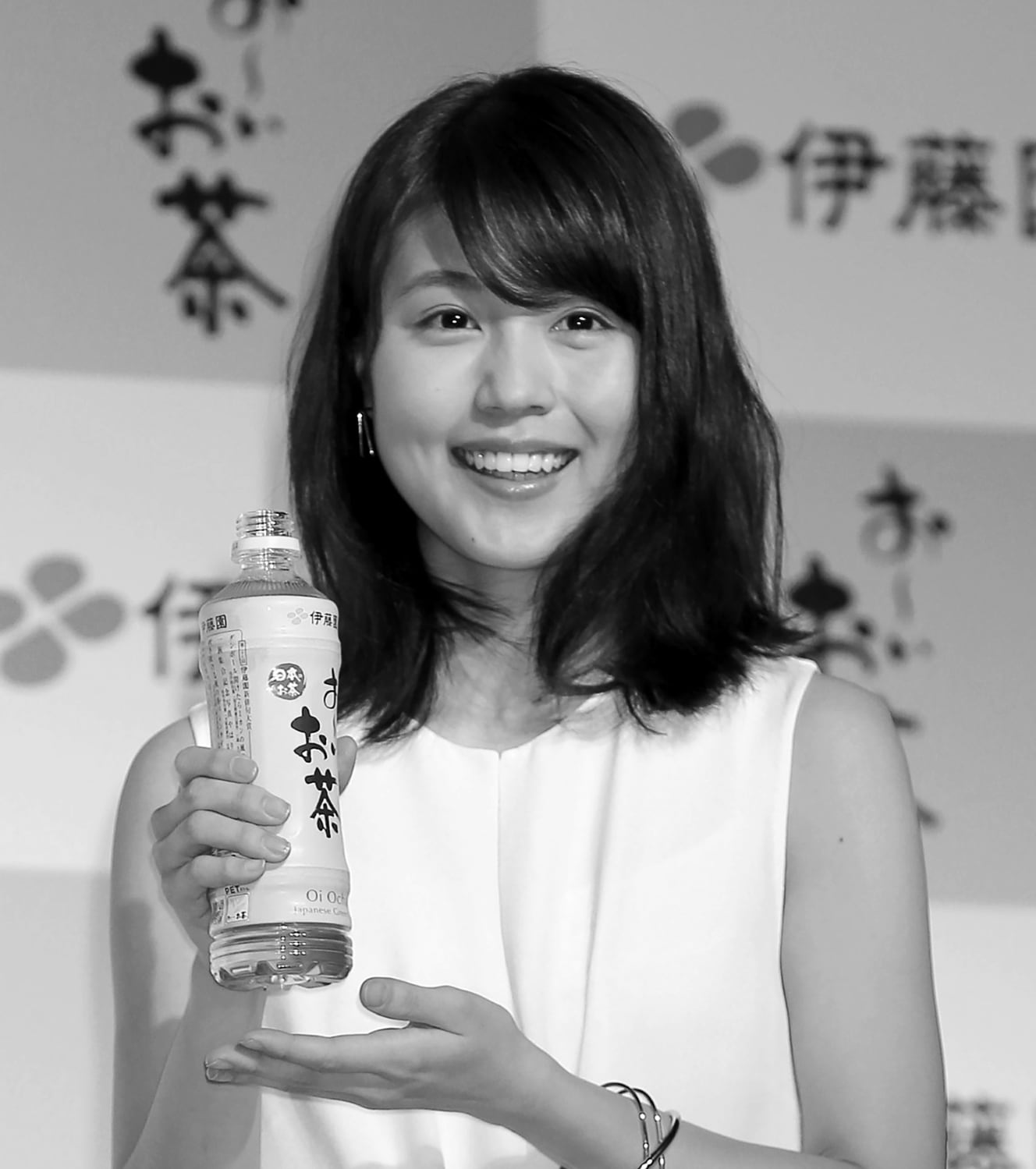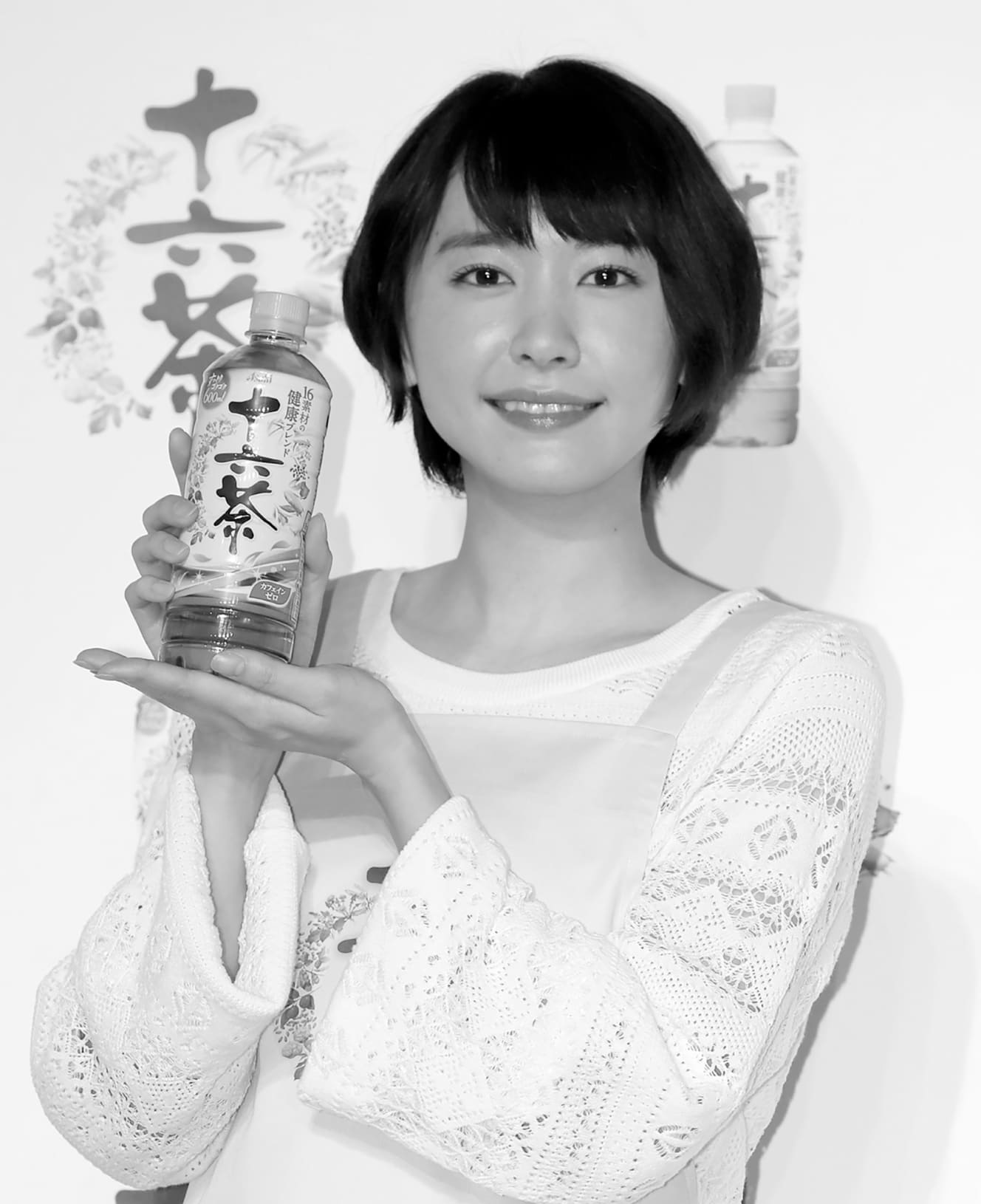A Study of PET Bottled Beverages: Strengths and Weaknesses! The “Tea War” between Ito En, the absolute champion, and the giant manufacturers
Suntory's Iemon, Nippon Coca-Cola's Soukenbicha and Aya Taka, Kirin's Namaicha and Afternoon Black Tea, and Asahi Soft Drinks' Sashi are all aiming to take over the Oiicha brand.

I saw the first sunrise at a very small station.
This haiku, written by an 8-year-old elementary school student in Osaka Prefecture, became the talk of the town on X (formerly Twitter) in October when it won the highest prize, the Minister of Education, Culture, Sports, Science and Technology Award, in a haiku contest.
The name of this prize, one of the largest in Japan, is the “Ito En Oi-Ocha New Haiku Grand Prize. Selected works will appear on the label of the PET-bottled green tea drink “Oi Ocha. Economic journalist Takai Naoyuki spoke of the prize.
Oi Ocha” is Ito En’s unshakable signature product. Launched in 1985 as “Sencha in a can,” it was renamed “Oi Ocha” in 1989. In 1990, it became the first green tea beverage to be sold in PET bottles. The “New Haiku Grand Prize” was established as part of the advertising strategy, and has a 34-year history since the first contest in 1989. It is now well established, but it was quite a unique marketing strategy at the time to feature haiku submitted by consumers on the product packaging.
In the past, coffee was the most popular category in the soft drink industry. However, due to the growing preference for PET bottled beverages over canned beverages and the growing health consciousness, green tea ranked first in terms of production volume in ’17. We expect PET-bottled tea to continue to do well in the years ahead.”
Oi Ocha” has sold more than 40 billion bottles in total and is registered in the Guinness World Records as the world’s top-selling green tea beverage in terms of annual sales. Behind the creation of the world’s best-selling bottled tea was the extraordinary corporate effort of Ito En’s “Oi Ocha” brand.
Oi Ocha” is the world’s first transparent green tea. The clear color, which excludes sediment, makes the liquid less prone to oxidation and stabilizes the taste. It also looks better when displayed on the shelf, making it easier for consumers to pick up. This is how “Oi Ocha” established itself as a leading product in the industry,” said Market Advisor Hideo Amano.
Another of ITO EN’s strengths is its ability to secure high-quality tea leaves.
Tea leaves are an agricultural product, so the supply of tea leaves is not stable. We have therefore contracted with domestic tea farmers on a buyout basis, or cultivated abandoned land from scratch in cooperation with local governments to create new tea fields, to ensure a stable supply of high-quality tea leaves to our factories,” says beverage industry consultant Takahiro Ezawa.
While “Oi Ocha” maintains the No. 1 share in the green tea beverage market with annual sales of 458.6 billion yen, Ito En has the No. 1 share in other “bottled tea” products.
The “Health Mineral Mugi-cha,” which went on sale in 2002. With the tailwind of increasing health consciousness, caffeine-free and mineral-rich barley tea is now a growing genre. In 2012, the annual market size was 42.6 billion yen, but it has now quadrupled to 168.9 billion yen,” said Takai.
In 2010, total sales of “Healthy Mineral Mugi-cha” exceeded 13 billion units. It was recognized by Guinness World Records as the world’s best-selling barley tea beverage.
Green tea has the largest market and barley tea is growing rapidly. Ito En, the leader in both markets, is not by far the largest beverage manufacturer, but it reigns as the absolute king in the bottled tea industry. However, the other companies that are following the leader are not sitting idly by.


A Secret Plan to Overthrow the Champion
In 2004, Suntory, the largest beverage maker in Japan, launched a counterattack against “Oi Ocha” with its hit product.
Suntory, which has an established reputation for marketing, first identified the barriers to entering the green tea market. Suntory, which has an established reputation for marketing, first identified three barriers to entering the green tea market: a stable supply of tea leaves, the accumulation of knowledge about tea, and the ability to judge taste. Therefore, instead of doing everything in-house like Ito En, Suntory turned to Fukujuen, one of the world’s top tea companies, to create a masterpiece. Iemon” was named after the first generation of Fukujuen. With this hit, the bottled tea industry was no longer completely dominated by Ito En. Another strength is Suntory Oolong Tea, which holds the top share in the oolong tea category with annual sales of 55.3 billion yen.
Three years after the appearance of Iyemon, Coca-Cola Japan developed a competing product to Ito En. Three years after the launch of Iyemon, Nippon Coca-Cola developed a competing product to Ito En’s Ayataka.
Using the same method as Suntory, we teamed up with the Kamibayashi Harumatsu Honten, a long-established tea company in Kyoto with a history of 450 years. What was groundbreaking about Ayataka was that it made consumers accustomed to the clear green color of “Oi Ocha” aware of the delicious taste of nigori. Ito En differentiated itself by emphasizing that the nigori, which it had eliminated through its corporate efforts, was the true taste of tea brewed in a kyusu (Japanese teapot). Currently, it is in third place in the green tea category behind “Oi Ocha” and “Iemon.
Coca-Cola Japan’s strength lies in its solidity, with strong products in each category, such as “Soukenbicha,” No. 1 in the blended tea category with an annual market size of 87.5 billion yen, and “Kiang Oolong Tea,” No. 2 in the oolong tea category.
While all companies are competing with green tea, Kirin, a major beer manufacturer, is exerting its influence by attacking the “hole in the market.
While its “Seikucha,” which features the sweet taste of gyokuro, ranks only fourth in the green tea category, it has the “Afternoon Black Tea” series, which is by far the number one product in the black tea market, with an annual market size of 216.7 billion yen. Black tea is a very difficult beverage to serve cold compared to Japanese tea. Black tea contains caffeine and tannin, both of which turn cloudy white when left cold. It was Kirin that overcame this weakness, known as the ‘cream-down phenomenon,’ and created the ‘clear iced tea manufacturing method’ that keeps the product clear,” said Ezawa.
The Afternoon Black Tea series has maintained its brand power by producing many derivative products, such as “Afternoon Black Tea Apple Tea Plus” and “Afternoon Black Tea Oishii Sugar Free Fragrant Lemon.
Currently, half of the total beverage market is unsweetened, but for black tea, sugared products are preferred. For Afternoon Tea as well, of the three main products (straight, milk, and lemon), the best-selling is the sweetened milk.
While the four major companies are producing hit products with the largest market share in their respective categories, Asahi Soft Drinks, which sells products such as Jurokucha, the second largest blended tea, has yet to make its presence felt.
In April of this year, the company launched a new brand, “Sashimi,” featuring NBA player Rui Yamura (25) in its commercials, which sold well until July and the company revised its annual sales target upward. Perhaps the product was bought by trial users when it was first launched, but it has not gained enough repeat customers. We hope to see a turnaround in the future.
Ito En’s once dominant presence in the market is slowly crumbling. The power structure of the PET-bottled tea industry is being repainted after a clear, unclouded struggle.

From the December 22, 2023 issue of FRIDAY
PHOTO: Shinji Hamasaki, Sankei Shimbun
